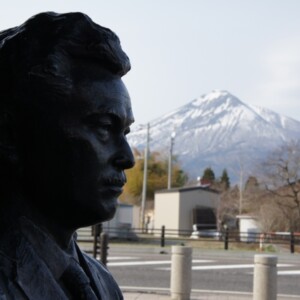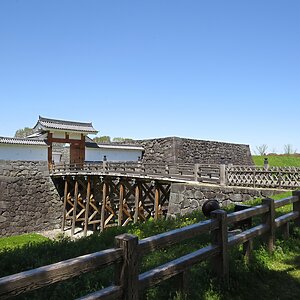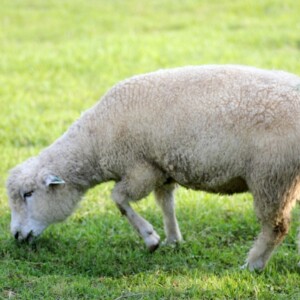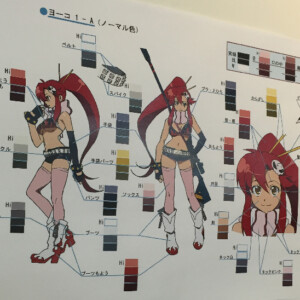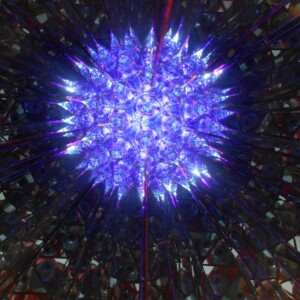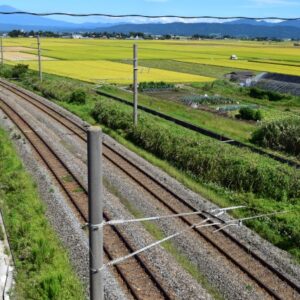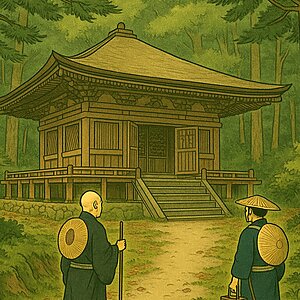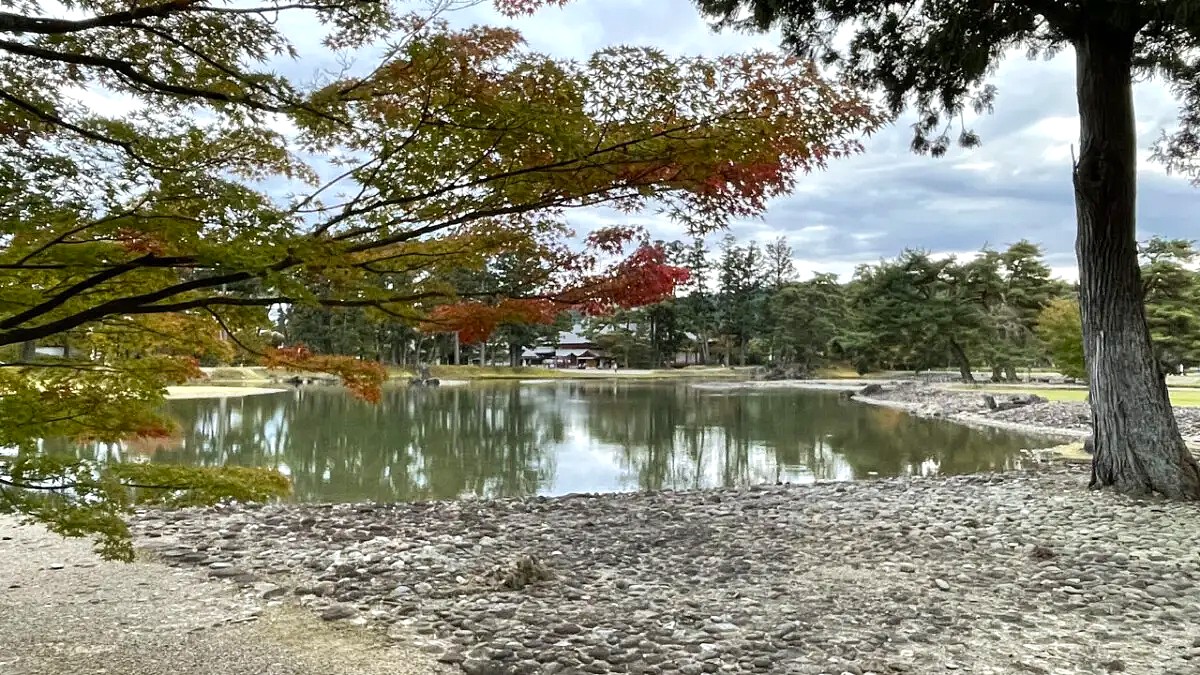
[JR East Pass Trip: Part 2 of Day 2] After seeing Mokoshiji Temple, the remains of the soldiers' dreams, we returned to Sendai temporarily!
table of contents
This is a continuation of.
In Part 1 of the second half of the second day, after lunch we took a stroll around Chusonji Temple in Hiraizumi, where we learned about how Hiraizumi's cultural heritage was registered as a World Heritage Site and received a brief explanation of Chusonji Temple
In Part 2 of the second half of the second day, we will descend from Chusonji Temple and head towards Motsuji Temple and the ruins of Kanjizaio-in Temple
After descending from Chusonji Temple, we headed to the grave of Musashibo Benkei before heading to Motsuji Temple
Although we were unable to explain this in Part 1 of the second half of Day 2,
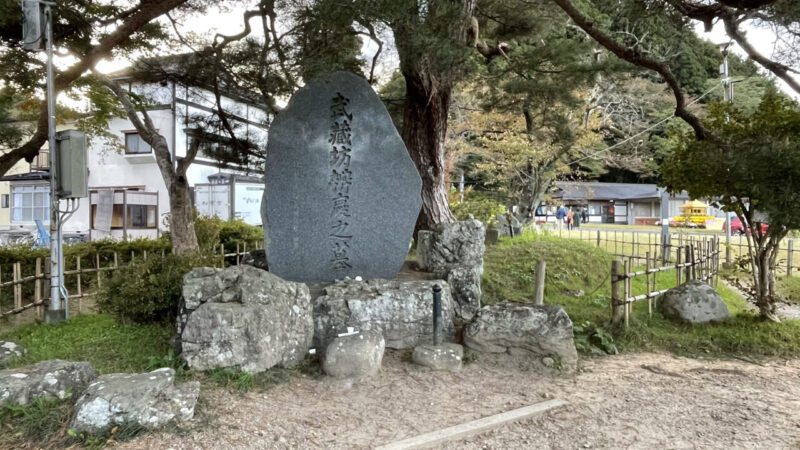
There are many stories about this across the country, but the most famous one is when Minamoto no Yoshitsune's Kinugawa mansion was attacked by Fujiwara no Yasuhira's army and he remained unfallen despite being hit by hundreds of arrows
This is the story of "Benkei being stranded" that is still told today
The last poem Benkei wrote on that occasion was
"In the streets of the six paths, wait for me, even though it is customary to be late and wait for others."
Yoshitsune responded with the following phrase:
"In the next world and in the next world, we will reunite, up to the purple clouds."
Although Musashibo Benkei's grave is located along National Route 4, it may be difficult to notice
When you visit Chusonji Temple, it's a good idea to stop by the grave and recite the above verse
It's 4pm and we're heading to the ruins of Kanjizaio-in Temple at Motsu-ji Temple
It takes 11 minutes to walk to Motsu-ji Temple and the ruins of Kanjizaio-in Temple, a distance of about 1.3 km
On the way there, there is the Hiraizumi Cultural Heritage Center, so it's a good idea to stop by
The Hiraizumi Cultural Heritage Center is hosting a "Reviving Hiraizumi's Time and Space" exhibition where visitors can dig, read, and walk through the town. The center uses a topographical model to provide a three-dimensional introduction with video and audio, and also displays artifacts excavated from within the town, allowing visitors to see Hiraizumi's cultural heritage as materials that support its history
Unfortunately, I wasn't able to stop by due to time constraints, but I've listed the details of the center below
INFORMATION
- Name: Hiraizumi Cultural Heritage Center
- Address: 44 Hiraizumi Hanadate, Hiraizumi-cho, Nishiiwai-gun, Iwate Prefecture, 029-4102
- Business hours: 9:00-17:00 (entry by 16:30)
- Closed: New Year's holiday (December 29th to January 3rd)
GOOGLE MAP
Kanjizaio-in Temple Ruins
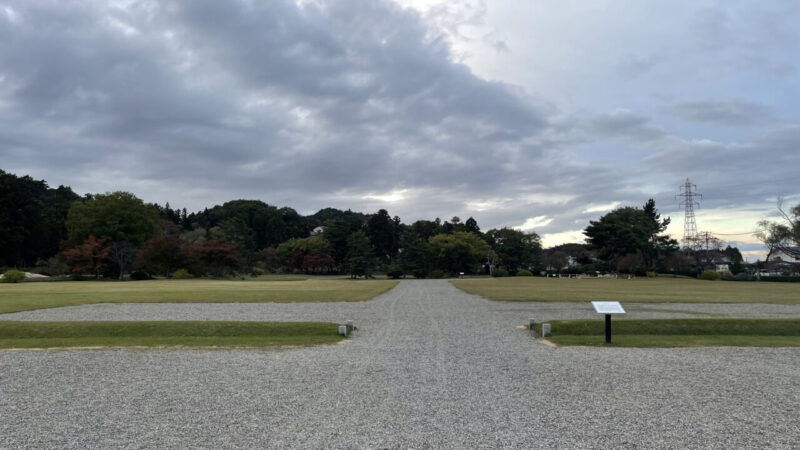
Before we knew it, we had arrived at the ruins of Kanjizaio-in Temple
Kanjizaio-in Temple, built by the wife of Motohira, the second head of the Oshu Fujiwara clan, has lost all of its buildings, but the Pure Land garden, centered around Maizuru Pond, remains almost completely intact. It is now maintained as a historic park and serves as a place of relaxation for the townspeople
The ruins of Kanjizaio-in Temple are one of the five properties that make up Hiraizumi's World Cultural Heritage Site
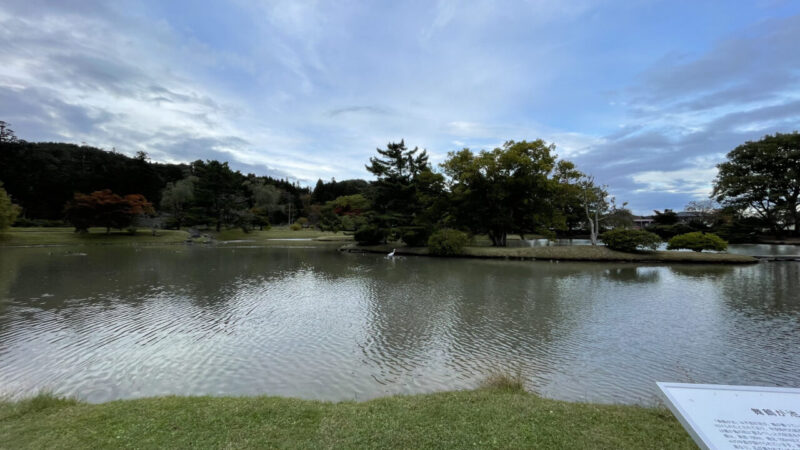
I wrote above that Jodo Park remains almost completely intact, but the site of Kanjizaio-in Temple fell into disrepair after it was abandoned in 1189, and by the early modern period, all of the buildings and pagodas had been lost, the gardens had fallen into disrepair, and Maizuru-ga-ike Pond had been turned into a rice paddy
A large-scale excavation survey was carried out in 1973, and it was discovered that there were two Amida halls, one large and one small, in the northern part of the temple grounds, which measured approximately 120m east to west and 240m north to south, and that there was a garden pond in the center
Based on the results of archaeological excavations, the temple remains and gardens were restored and improved, resulting in the appearance we see today
The World Heritage Committee
highly values the Kanjizaio-in ruins, along with the Motsu-ji and Muryoko-in ruins, as assets that were "constructed as a symbolic expression of the Buddhist Pure Land in this world."
INFORMATION
- Name: Kanjizaio-in Temple Ruins
- Address: Hiraizumi Shirayama, Hiraizumi-cho, Nishiiwai-gun, Iwate Prefecture, 029-4102
GOOGLE MAP
Motsuji Temple
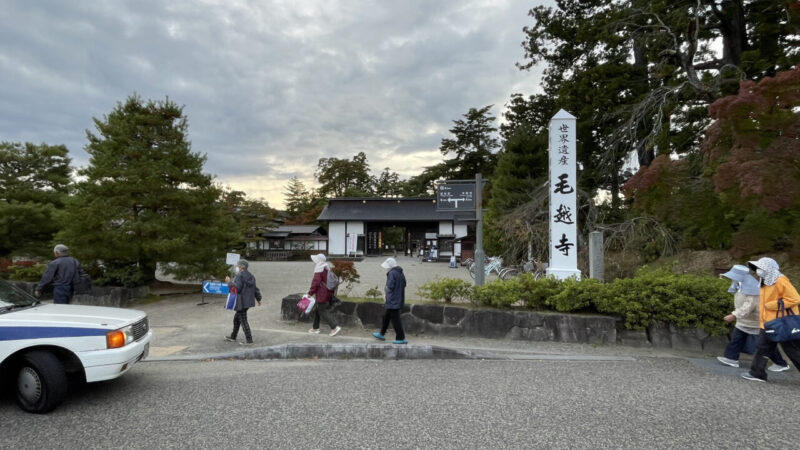
Motsuji Temple is located to the west of the ruins of Kanjizaio-in Temple, which we visited earlier
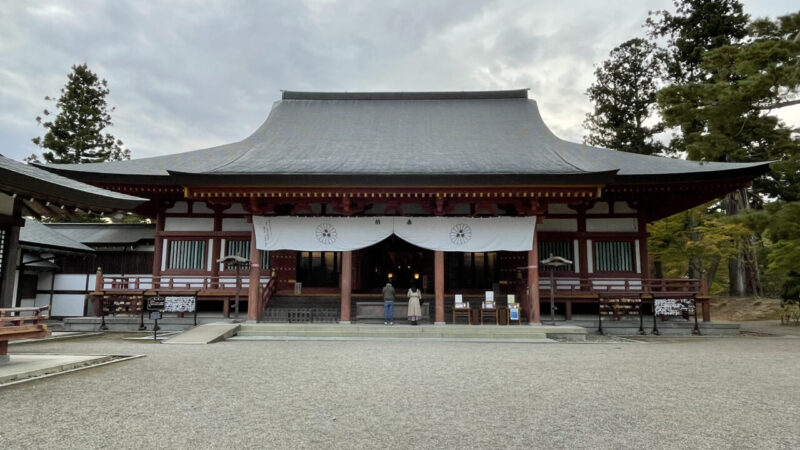
The name of Motsuji Temple comes from the "Legend of the White Deer" that is passed down in Hiraizumi
According to temple legend, in the third year of the Kasho era (850), when Jikaku Daishi was traveling around the Tohoku region, he came across this area and was enveloped in a blanket of fog, unable to take even a single step.
Looking down, he noticed scattered patches of white deer hair on the ground. Curious, Daishi followed the hair and found a white deer crouching ahead. As Daishi approached, the white deer disappeared, and then a white-haired old man appeared out of nowhere and told him to build a temple on the site and make it a sacred place. Daishi believed this man to be an incarnation of Medicine Buddha, so he built a temple and named it Kasho-ji Temple.
This is said to be the origin of Motsu-ji Temple.
It is written as follows
After that, many temple buildings were constructed during the reigns of the second Fujiwara lord, Motohira, and the third, Hidehira, and it is said that in its heyday it had 40 buildings and 500 monks' quarters, surpassing Chusonji in size and splendor
Currently, the Pure Land garden centered around Oizumigaike Pond and the remains of the temple buildings from the Heian period have been preserved in almost perfect condition, and the temple has been designated as both a Special Historic Site and a Special Place of Scenic Beauty by the national government
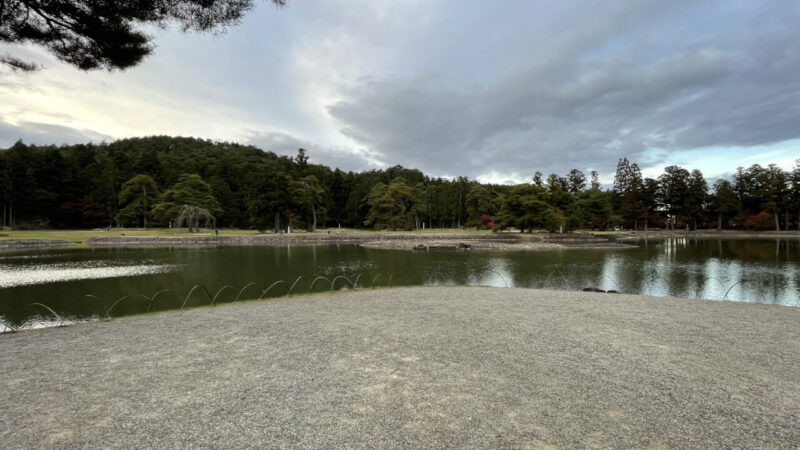
It was the end of October, but it was a little early for the leaves to turn red. I think that in the autumn foliage season, the view would have been magnificent, perfectly fitting the expression "Pure Land."
Here is a photo of Motsuji Temple during the autumn foliage season, borrowed from another website:
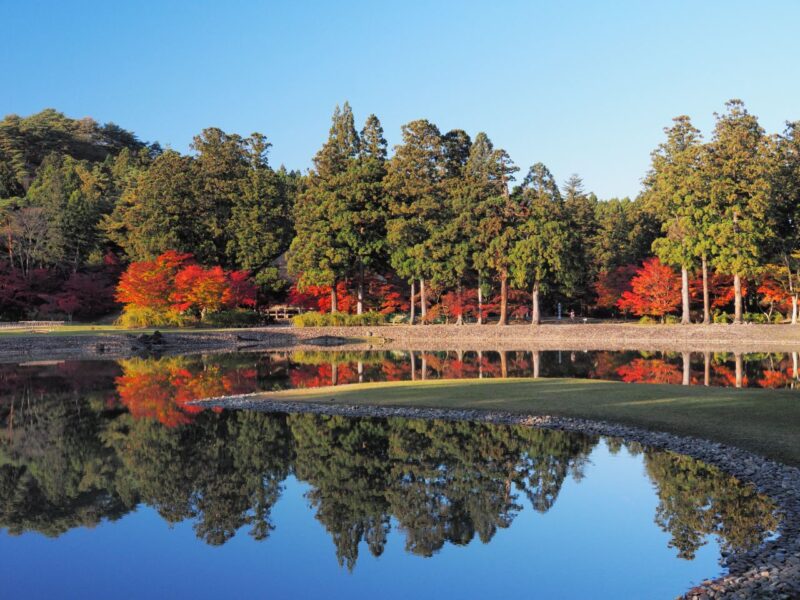
INFORMATION
- Name: Motsuji Temple
- Address: 58 Osawa, Hiraizumi, Hiraizumi-cho, Nishiiwai-gun, Iwate Prefecture, 029-4102
- Visiting hours: 8:30 AM - 5:00 PM *8:30 AM - 4:30 PM from November 5th to March 4th
- Admission fee: Adults 700 yen / High school students 400 yen / Elementary and junior high school students 200 yen
GOOGLE MAP
of Hiraizumi's World Heritage Site are Chusonji Temple, Motsuji Temple, Kanjizaio-in Temple Ruins, Muryoko-in Temple Ruins, and Mount Kinkei
On this trip, I arrived at Hiraizumi Station at 2 p.m. and toured the town, but there just wasn't enough time. If you're visiting Hiraizumi for sightseeing, you'll probably need two days and one night, so it might be better to take your time and explore the area
Hiraizumi also has a bicycle rental service, so it's a good idea to use it
Swallow Tour Hiraizumi Bicycle Rental
- Usage fee: Regular bicycle: 500 yen for 4 hours, 200 yen for each additional hour, 900 yen per day
Electric bicycle: 600 yen for 4 hours, 200 yen for each additional hour, 1,200 yen per day - Business hours: 9:00-16:00 (April 1st to the end of November)
- Location: Hiraizumi Station, Hiraizumi-cho, Nishiiwai-gun, Iwate Prefecture
- Luggage storage: Available
GOOGLE MAP
Gold Rental Hiraizumi also rents out go-karts for use on public roads, although a regular driver's license is required
Gold Rental Hiraizumi
- Usage fee: Bicycle rental: 550 yen for 3 hours, 1,100 yen for 1 day.
Public road go-kart: 2,750 yen for 1 hour. *Regular driver's license required. - Business hours: 8:30-18:00
- Holidays: Irregular holidays
- Address: 14 Shirayama, Hiraizumi, Hiraizumi-cho, Nishiiwai-gun, Iwate Prefecture
- Phone number: 0191-46-4031
- Parking: Available (free for users)
GOOGLE MAP
It was around 5pm and we were just about to reach the temple, so our stroll around Hiraizumi came to an end
From here, I returned to Hiraizumi Station, then to Ichinoseki Station, and then back to Sendai, where my "I went to Tohoku! Celebrating 150 years since the opening of the railway! A two-day, one-night trip with the JR East Pass" came to an end for now
Even though it was only the three Tohoku prefectures, I was able to see and experience so much that I wondered if it had been since my school trip that I had traveled so much
I am truly grateful that wherever I have visited, people have welcomed me kindly without me having to introduce myself
There are many things I haven't been able to write about in this blog, but I had a variety of encounters, and I think the biggest benefit was being able to compare the differences in culture, food culture, and city layout, even though we're all in the Tohoku region
I was thinking about this on the Shinkansen on the way back
My regret is that I packed too much into my schedule. It's good to make a plan, but it's no good to just stare at the computer or a book and think about it. I need to have more time and experience things on my own
This is a lesson to take into account when traveling solo
Celebrating 150 years since the railway opened! JR East Pass: 2-day, 1-night trip, fare summary!
This is the total train fare for this two-day, one-night trip
Day 1 total
| traffic section | train | fare | Ride time |
| Between Sendai Station and Morioka Station | Hayabusa | 6,790 yen | 39 minutes |
| Morioka Station - Kakunodate Station | Komachi | 2,830 yen | 55 minutes |
| Kakunodate Station - Akita Station (Finish point of Day 1) | Komachi | 3,000 yen | 43 minutes |
| Day 1 total | 12,620 yen | 137 minutes |
Day 2 total
| traffic section | train | fare | Ride time |
| Akita Station - Morioka Station | Komachi No. 18 | 4,620 yen | 108 minutes |
| Morioka Station - Ichinoseki Station | Yamabiko No. 60 | 3,560 yen | 39 minutes |
| Ichinoseki Station - Hiraizumi Station | Tohoku Main Line | 200 yen | 7 minutes |
| Hiraizumi Station - Ichinoseki Station | Tohoku Main Line | 200 yen | 8 minutes |
| Ichinoseki Station - Sendai Station | Yamabiko and Hayabusa | 4,480 yen | 32 minutes |
| Day 2 total | 13,060 yen | 194 minutes |
Total cost for a two-day, one-night trip
| JR East Free Pass ticket fee | 22,150 yen |
| Total fare for the first day | 12,620 yen |
| Total fare for Day 2 | 13,060 yen |
| Total fare for a two-day, one-night trip | 25,680 yen |
| Difference from the regular fare | +3,530 yen |
The total fare for the two-day, one-night trip was 25,680 yen, the free pass ticket cost 22,150 yen, and although this does not include accommodation, food, and souvenirs, I saved 3,530 yen
However, the JR East Free Pass is valid for three days
The journey is not over yet, we will return to Sendai and then head to Aomori on the third day
I was tempted to say, "What a busy salesman, returning from Akita and Iwate and then heading to Aomori the next day!", but it's valid for three days, so I'll enjoy it to the fullest
I understand that some people may say, "Why don't you just stay in Iwate?", but I would appreciate it if you would interpret this as "adult convenience."
There are so many places I want to visit in Aomori! I want to go to the Hirosaki Brick Warehouse Museum, the Aomori Museum of Art, try curry milk ramen, and also the Sannai-Maruyama ruins!
Still feeling tired, I headed to Aomori on the third day simply because it would be beneficial. Please bear with me for a little longer
JR East Pass Travel Series
TikTok videos
@neft_tohoku I went on a train trip with the JR East Japan Pass commemorating the 150th anniversary of the railway. Let's see how much you can save in three days! #150th Anniversary of Railways #JR East Pass #Shinkansen Year 2022 #Train Travel #Tohoku ♬ Walker – Official Sound Studio




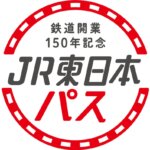


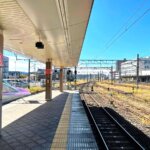
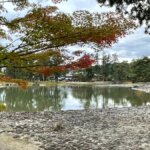
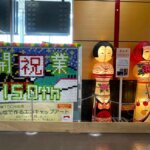
![[JR East Pass Trip: Day 3] A day trip to Aomori Bullet Tour to foster your energy at home! Tsugaru Kokeshi at Shin-Aomori Station](https://jp.neft.asia/wp-content/uploads/2022/12/IMG_3878-1200x675-1-150x150.jpg)
![[JR East Pass Trip: Day 2 Part 1] I'm already turning back to Iwate. Our goal is Hiraizumi, a town of history! Shinkansen platform near Akita Station](https://jp.neft.asia/wp-content/uploads/2022/12/IMG_3940-1200x900-1-150x150.jpg)
![[JR East Pass Trip: Part 2 of Day 1] Strolling around Akita City on the first day, delicious local sake and local cuisine! Giant Akita dog at Akita Station](https://jp.neft.asia/wp-content/uploads/2022/11/IMG_3762-1200x675-1-150x150.jpg)
![[JR East Pass Trip: Day 2 Part 2] Intensive exploration of Hiraizumi! World Heritage Sites: Chusonji Temple and Kinjido Chusonji Temple Information Board](https://jp.neft.asia/wp-content/uploads/2022/12/IMG_3829-1200x675-1-150x150.jpg)
![What is Ennen, a precious performing art that only a few remain today? | Motsuji Temple's Ennen Dance [Iwate Prefecture] Dance of Ennen "Young Woman and Priest"](https://jp.neft.asia/wp-content/uploads/2025/11/DSC_2037-150x150.jpg)
![[JR East Pass Trip: First Day 1] On the first day, we went to the samurai residences in Kakunodate in the morning! Kakunodate samurai residence](https://jp.neft.asia/wp-content/uploads/2022/11/IMG_3751-1200x675-1-150x150.jpg)
![[JR East Pass Trip: Explanation - Preparation Edition] I'm off! Commemorating the 150th anniversary of the opening of the railway! JR East Pass 150th anniversary of the opening of the railway](https://jp.neft.asia/wp-content/uploads/2022/10/150jrpass_logo_0422a_float-1200x796-1-150x150.jpg)



